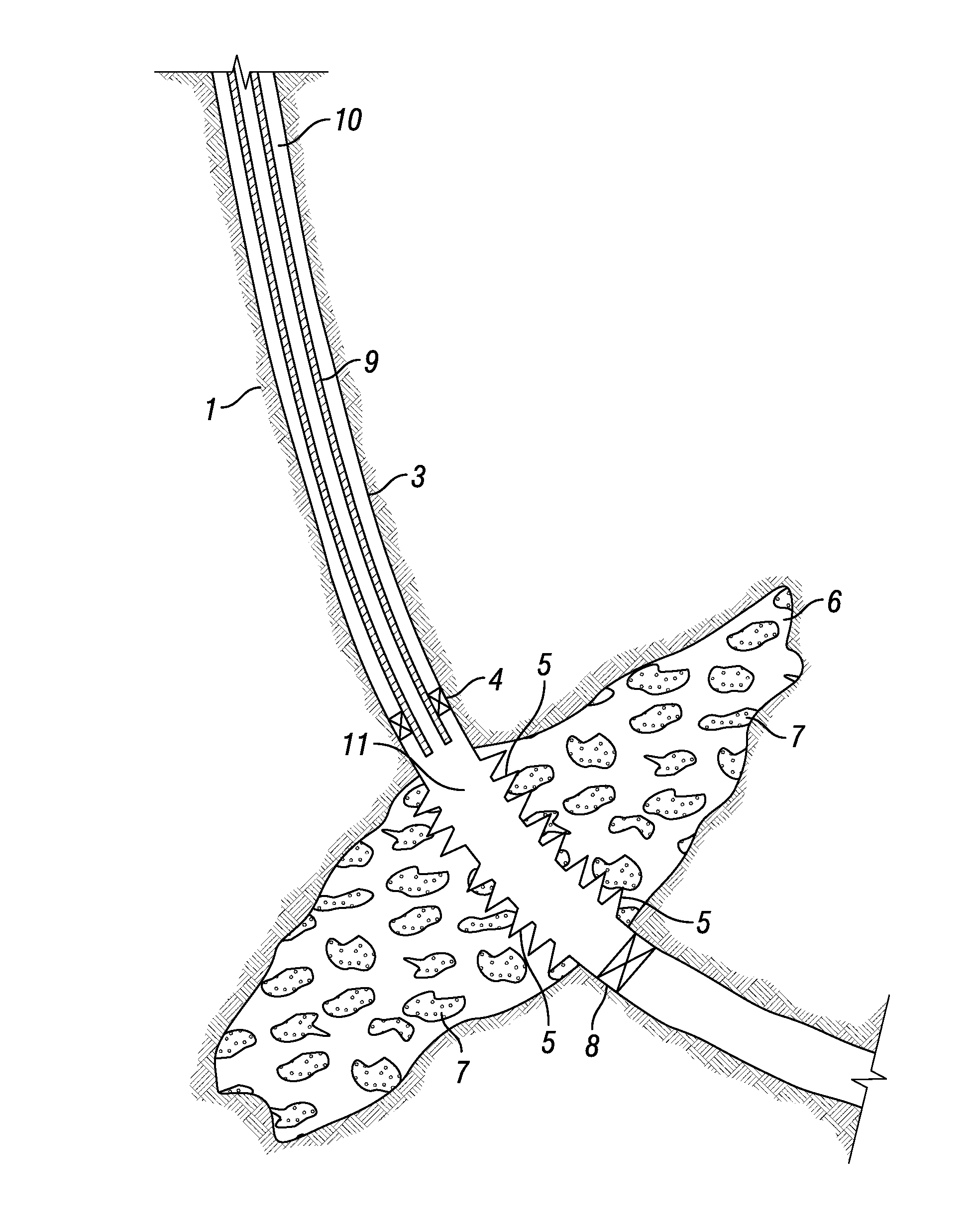Methods of Enhancing Fracture Conductivity of Subterranean Formations Propped with Cement Pillars
a technology of subterranean formations and cement pillars, which is applied in the direction of sealing/packing, wellbore/well accessories, ceramicware, etc., can solve the problems of reducing the volume of proppant, unable to resist fracture closure, and insufficient hydraulic fracturing in soft rock formations such as carbonate formations to create conductive pathways, etc., and achieves enhanced fracture conductivity
- Summary
- Abstract
- Description
- Claims
- Application Information
AI Technical Summary
Benefits of technology
Problems solved by technology
Method used
Image
Examples
Embodiment Construction
[0016]The present invention provides methods of enhancing fracture conductivity within propped subterranean formations using a cementitious material and methods of delivering and / or treating such cementitious material. The cementitious material of the present invention may be introduced alone as a “cement pack” within a fracture in a wellbore in a subterranean formation as a cementitious slurry that largely fills the interior of a fracture or a portion of the interior of a fracture (e.g., the cementitious material is packed into the fracture without spacer fluid to form). In other embodiments, the cementitious material of the present invention may be introduced in the form of cementitious material aggregates or cement pillars within a fracture in a subterranean formation. As used herein, the term “cementitious material aggregates” and related terms such as “cement pillars” refer to coherent cluster of wetted, settable cementitious material that remains a coherent body when placed in...
PUM
| Property | Measurement | Unit |
|---|---|---|
| fracture | aaaaa | aaaaa |
| breaking | aaaaa | aaaaa |
| fracture conductivity | aaaaa | aaaaa |
Abstract
Description
Claims
Application Information
 Login to View More
Login to View More - R&D
- Intellectual Property
- Life Sciences
- Materials
- Tech Scout
- Unparalleled Data Quality
- Higher Quality Content
- 60% Fewer Hallucinations
Browse by: Latest US Patents, China's latest patents, Technical Efficacy Thesaurus, Application Domain, Technology Topic, Popular Technical Reports.
© 2025 PatSnap. All rights reserved.Legal|Privacy policy|Modern Slavery Act Transparency Statement|Sitemap|About US| Contact US: help@patsnap.com



